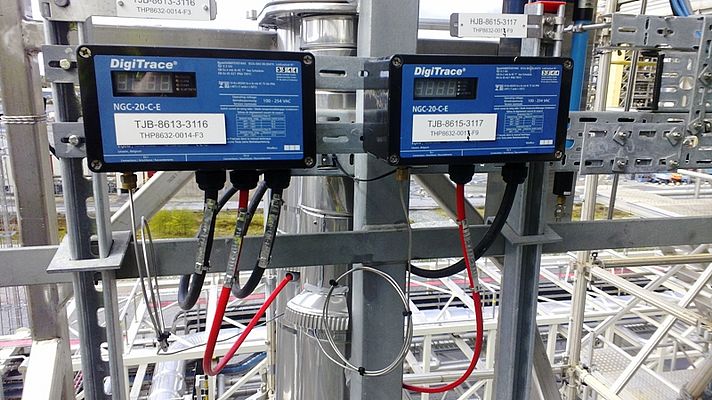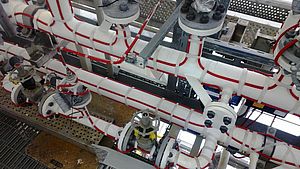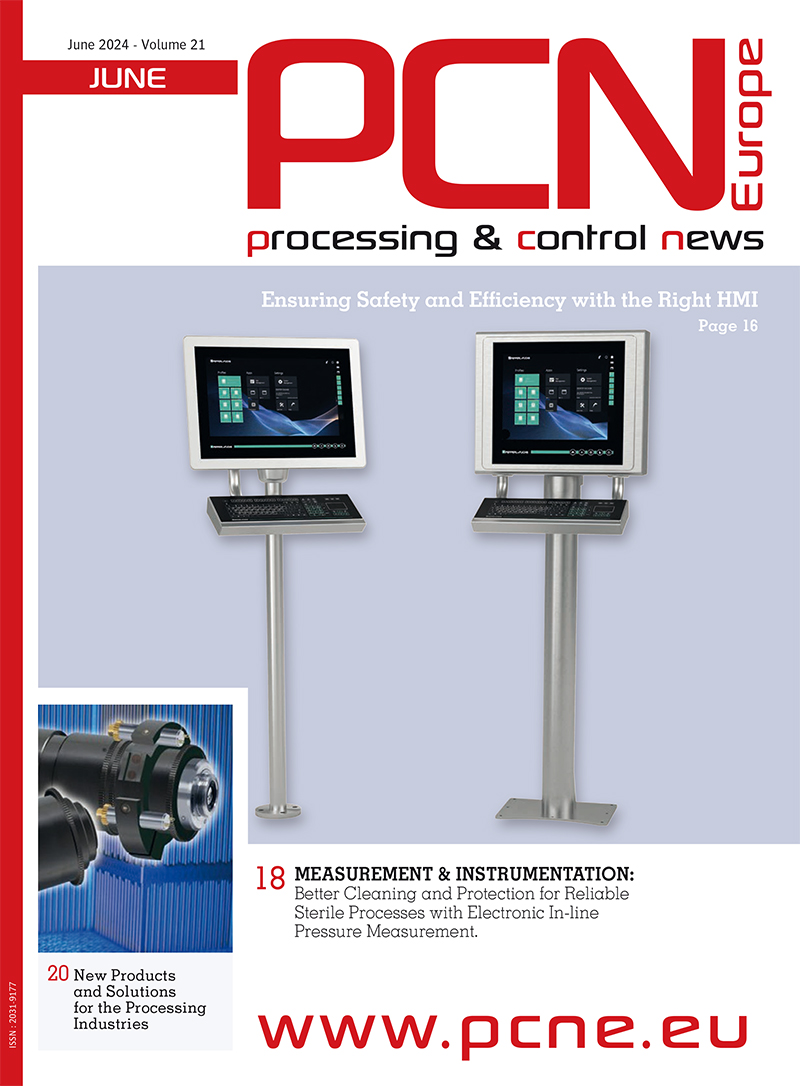A comprehensive heat-tracing installation has been completed at the CO2 Technology Centre Mongstad (TCM), one of the most innovative environmental projects in Norway in recent years. The installation will help to keep pipes safe and functioning all year round.
About the facility
A joint venture between Gassnova, Statoil, Shell and Sasol, the CO2 TCM is the largest carbon capture test centre in the world. The facility is funded by the Norwegian government (through its enterprise Gassnova) and was built in collaboration with its present technology vendors Alstom and Aker Clean Carbon, to test ways of reducing CO2 emissions in industrial applications. The TCM is made up of two plants, where a process called post combustion capturing is used to separate carbon dioxide from flue gases. The CO2 that is captured can, in the future, be safely transported and stored off-site, instead of being released into the atmosphere.
The TCM is a truly a unique facility. Every year the plants can capture up to 100,000 tonnes of CO2 from two flue gas sources – the refinery’s cracker and the combined heat and power plant-making it the most advanced carbon capture and storage (CCS) facility in the world. Pentair Thermal Management’s Raychem self-regulating heat-tracing cables help to keep the oil flowing in the pipes, while its control and monitoring solutions prevent potentially dangerous fluctuations in temperature, and help save energy.
Saving power on frost protection lines
Self-regulating heating cables are highly energy- and cost-efficient, only emitting heat when and where it is needed. They do this by reacting to the ambient temperature, expanding when it is warm and contracting when it is cold. When the core contracts, electrical pathways are formed, increasing resistance and creating heat, and when expanded, these circuits are broken, which reduces heat output.
Further energy savings of up to 70 per cent can be achieved by connecting the cables to a control and monitoring system, since the self-regulating cables will still use a large amount of power even between 0 and 5°C, the setpoint of traditional on/off thermostats. When calculating energy savings at the design stage, Pentair Thermal Management’s project and product teams were able provide the facility owners at the TCM with accurate potential energy savings based on simulations from geographical and meteorological data.
The approach taken at the TCM comprised of 300 DigiTrace NGC-20 controllers to deliver local control with central monitoring. A 'best of both worlds' solution, it enables areas with small temperature changes to be controlled locally, with much of the source site data sent to a central location. One of the main benefits of this option is enhanced health and safety as maintenance engineers do not have to go into the field as frequently. The local control and central monitoring solution is also highly cost-efficient as it incorporates ‘daisy chain’ power distribution wiring, wherein the local controllers can be connected to each other, optimising the power cabling infrastructure.
Final thoughts
When thinking about which control and monitoring system to select, facility owners should partner with a heat-tracing solutions specialist early on in the process to make sure they choose a system that is right for them. Pentair Thermal Management has been providing total heat management solutions to industrial applications for more than 50 years, installing more than 500,000 kilometres of cable to date. The company has been working with the contractors at the Mongstad plant for more than 35 years, delivering heat-tracing and control and monitoring solutions to the refinery located next to TCM since 1976. With a complete focus on both energy and cost-efficiency and an intense commitment to the environment, Pentair Thermal Management’s strategy is completely aligned with that of the TCM owners.




















